Don’t Let Bad Time Management Undermine Your Leadership
Harvard Business
FEBRUARY 5, 2025
Five common mistakes to avoid.
This site uses cookies to improve your experience. To help us insure we adhere to various privacy regulations, please select your country/region of residence. If you do not select a country, we will assume you are from the United States. Select your Cookie Settings or view our Privacy Policy and Terms of Use.
Cookies and similar technologies are used on this website for proper function of the website, for tracking performance analytics and for marketing purposes. We and some of our third-party providers may use cookie data for various purposes. Please review the cookie settings below and choose your preference.
Used for the proper function of the website
Used for monitoring website traffic and interactions
Cookies and similar technologies are used on this website for proper function of the website, for tracking performance analytics and for marketing purposes. We and some of our third-party providers may use cookie data for various purposes. Please review the cookie settings below and choose your preference.

Harvard Business
FEBRUARY 5, 2025
Five common mistakes to avoid.

Harvard Business
JUNE 8, 2021
Lessons from a management and leadership professor on true effectiveness and productivity.
This site is protected by reCAPTCHA and the Google Privacy Policy and Terms of Service apply.
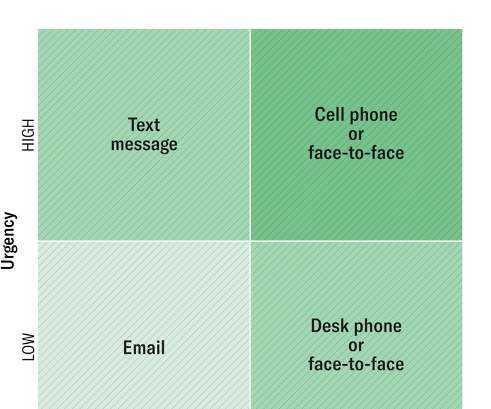
Markovitz Consulting
JANUARY 12, 2021
You can read that version, with more links to related articles, here.) ———————————————————————————————————————————————————— Leaders in organizations are always seeking to improve employee productivity (including their own). All too often, that quest goes no further than time management training provided by the HR department.

Tom Spencer
APRIL 12, 2024
Meetings can either be a powerful catalyst for collaboration and decision-making or a drain on time and productivity. Whether you are in consulting, strategy, operations, or product management, the ability to manage meetings effectively is a crucial skill that can significantly impact the success of your endeavors.

Harvard Business
SEPTEMBER 26, 2023
Technological progress and new digital products have perennially been relied upon for improving operations. But studies now reveal that doctors spend half of their time managing EHRs and desk work, shortchanging patients and fueling burnout. But the truth is, tech can often make bureaucracy worse.
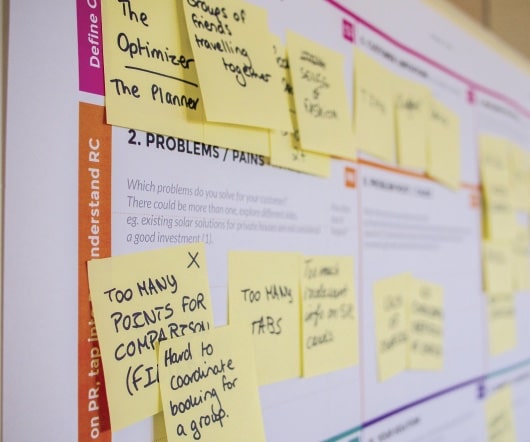
Harvard Business
APRIL 17, 2018
When a company needs a supervisor for a team, senior leaders often anoint the team’s most productive performer. Some of these stars succeed in their new role as manager; many others do not. And the failure can be personally costly for the new manager, causing them to doubt their skills, smarts, and future career path.
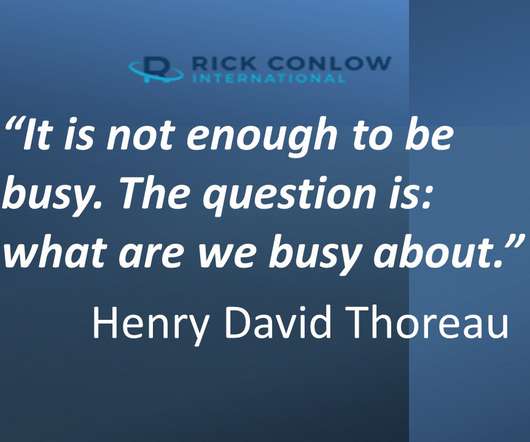
Rick Conlow
OCTOBER 8, 2021
And what does all of this have to do with managing others? 2 Considerations to Move from Whirlwind to Productivity. As a manager, even though you have a million things on your plate, it is your responsibility to know and understand what is occupying your team’s time. (No, So, where do we draw the line?

Rick Conlow
MARCH 29, 2021
The greatest leadership principle of all-time is elusive even though it is common sense. Managers often miss the greatest leadership principle of all-time. They give you clues to what’s going on in organizations, and the potential impact of The Greatest Leadership Principle of All-Time.

Harvard Business
OCTOBER 31, 2024
This article includes a curated list of HBR articles and podcast episodes to help you manage yourself, your team, and your organization when you’re consumed with what’s happening outside of work. As much as we wish we could, we can’t eliminate uncertainty in the world.

Harvard Business
FEBRUARY 27, 2017
“My team has a time management problem,” leaders often tell me. “Time management” becomes a catchall solution to this problem, and they want to hire me to offer tips and techniques on things like prioritizing and using their calendars better. They create an environment that undermines focus.

Harvard Business
APRIL 30, 2018
energy, enthusiasm, and focus), much of the popular narrative has focused on organizational factors such as job design, leadership, or culture. We found that increasing your engagement and productivity at work could be as simple as making a plan for the day. Why New Personal Productivity Efforts Don’t Stick. Sabina Nawaz.
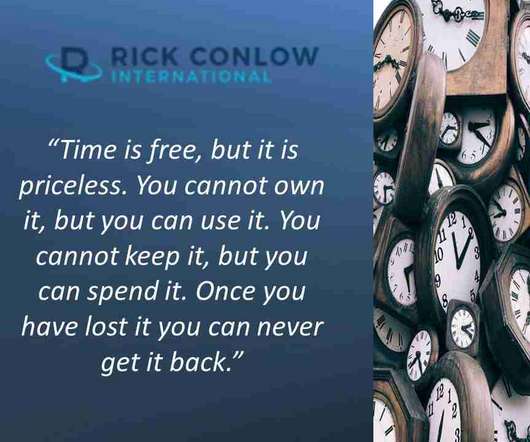
Rick Conlow
SEPTEMBER 25, 2022
Managing your time, leads to managing your life. Real time management is self-management. You cannot really manage time because it is constant. You can manage yourself! To expand our potential, all managers need: Feedback – positive and negative; ask for it! But do not worry.

Rick Conlow
JUNE 19, 2023
The number of companies adopting and managers leading remote work teams has increased significantly. Now however, controversy about the productivity challenges of leading remote work teams confront organizational assumptions about its effectiveness. Owl Labs date says they are 47% more productive. hours a week.

LSA Global
NOVEMBER 11, 2024
If no collective work product beyond the sum of their independent tasks and individual accomplishments is required for success, then being a working group is sufficient. Is everyone willing to compromise enough from time to time for the greater good of the team? Examples include basketball, rugby, soccer, and football teams.

Harvard Business
APRIL 6, 2017
The true cost to business can be far greater, thanks to low productivity across organizations, high turnover, and the loss of the most capable talent. In our book Time, Talent and Energy , we note that when employees aren’t as productive as they could be, it’s usually the organization, not its employees, that is to blame.

Harvard Business
MARCH 29, 2018
More-stable scheduling increased sales and labor productivity. Labor productivity increased by 5%, in an industry where productivity grew by only 2.5% So more stable scheduling is feasible, and holds the potential for improved sales and productivity. The results were striking. per year between 1987 and 2014. .”

Harvard Business
JUNE 12, 2017
On-boarding, for example, is usually a one-off session in which reps are expected to absorb large amounts of information in a limited amount of time. They must learn how other functions affect, and are affected by, selling activities: for example, product management, marketing, pre-sale application support, and post-sale service.

Johanna Rothman
SEPTEMBER 24, 2020
We hear about agile teams, in the form of product or feature teams. However, too many managers still work independently. That’s a problem when the teams have organizational problems a single manager can’t solve. Instead of managers working alone, what if we had teams of managers? We have senior leadership teams.

Ben de Haldevang
FEBRUARY 14, 2017
The Guardian recently published a long but interesting piece on the history of time management (from Taylor forward). For me, the bit that’s really interesting and that feeds well into the current discourse is the differentiation between productivity and creativity. You’ll find the link here.

LSA Global
NOVEMBER 21, 2024
When Is the Best Time for Management Training ? Done right, management training is a critical component of leadership development because it equips managers with the skills and insights necessary to lead, manage, and coach their teams to higher performance. So, when is the best time for management training?

Rick Conlow
OCTOBER 19, 2023
International Coach Federation (ICF) Research: The ICF conducts extensive research on coaching, and their studies have found that 70% of individuals who received coaching reported improved work performance, communication skills, and productivity. It also highlighted that coaching is highly effective in developing leadership skills.

Harvard Business
OCTOBER 17, 2023
If everything is urgent, there’s little opportunity for creative and deep work, which tends to flourish only when there’s time and space. In this article, the author offers tips that will help you focus on what’s truly urgent in your organization and enable your team to deliver strong results and sustain high performance over time.

Brimstone Consulting
JANUARY 14, 2022
Members of the leadership team expressed the same, but were also concerned about declining productivity and engagement. A critical piece of this work was gaining the buy-in of leadership to follow the established guidelines. Take the example of a biotech company.

Harvard Business
FEBRUARY 23, 2018
Does this stalled revolution play out in management positions, too? To explore this, I used data on full-time managers obtained from the U.S. Female managers are concentrated in fields that emphasize people-centered caring skills, while men are concentrated in fields dealing with production-centered skills.

Harvard Business
JUNE 4, 2018
Our main thesis was that as managers’ workloads increase, they are more likely to prioritize work tasks focused on supporting the functioning of the organization’s technical core (e.g., Doing so clearly signals that fair treatment is a core leadership task.

Tom Spencer
JULY 15, 2022
This will help you practice being a consultant and improve your time management skills before graduation. Time Commitments in Graduate School. Many things vie for the time and attention of a graduate student. Time Commitments in Consulting. In academia, you exchange your time for research papers and projects.

Harvard Business
MARCH 16, 2018
When I worked as Director of Leadership Development at Walmart, my days were full of meetings. I realized that what I needed was a practical way to get more work done without taking more time. On these days, I’m 10 times more productive. I travel to them, and then back again, in the middle of my work days.
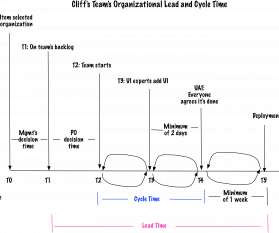
Johanna Rothman
AUGUST 4, 2020
I still see so many teams spend weeks at a time estimating projects they won't start for years. Or, that someone is supposed to estimate ROI when no one has done any small experiments to see if anyone would buy/use this product/feature. The managers lose their context to make a decision quickly. The managers don't work together.

Harvard Business
MAY 10, 2016
And yet in my work with clients, I often discover old ideas about time management that don’t take this new reality into account. Is it common at your company for email to be used for urgent and time-sensitive communications? Does he have a dedicated workspace that’s conducive to productivity ?

Harvard Business
DECEMBER 14, 2016
More specifically, highly utilized individual contributors that work 120% longer hours than their peers are 33% more likely to be disengaged and twice as likely to view leadership unfavorably as highly utilized employees working similar hours as their team. Lastly, managers are engaged at work, too. One-on-ones remain vital.

Harvard Business
OCTOBER 19, 2017
Your Team’s Time Management Problem Might Be a Focus Problem. If we spend our entire workday sitting in meetings and answering emails, it leaves little space in our minds to do the hard thinking that is essential to good decision making and leadership. Analyze where your time is best spent. You and Your Team Series.

Organizational Talent Consulting
JULY 4, 2022
What if I told you that your greatest leadership challenge isn't what you think it is? As we began to work together, it became clear they didn't have the time management challenge they initially believed. There is no shortage of challenges and stress in leadership. But it doesn't. Let's take a closer look at why and how.

Johanna Rothman
AUGUST 14, 2019
In Part 1 , I wrote about how “Agile” is not a silver bullet and is not right for every team and every product. This post is about how management fits into agile approaches. Too often, managers think “agile” is for others, specifically teams of people. Managers Create and Refine the Culture.

Johanna Rothman
NOVEMBER 19, 2021
You might like these blog posts, where I walked around the idea of aging but didn't explicitly address it: Why Minimize Management Decision Time. Management Debt, Technical Debt, and Decision-Making. The post Aging Fun with Drunk Agile (Video) appeared first on Johanna Rothman, Management Consultant.

Brimstone Consulting
JULY 14, 2020
The complexities and systemic disruption of the COVID-19 pandemic have made managing time and boundaries more challenging than ever. Tim Wentworth, President Cigna Services, cites vigilant time management as one of the keys to his success as the leader of a major organization.

Brimstone Consulting
JANUARY 14, 2022
Members of the leadership team expressed the same, but were also concerned about declining productivity and engagement. A critical piece of this work was gaining the buy-in of leadership to follow the established guidelines. Take the example of a biotech company.

LSA Global
MARCH 17, 2025
Top 10 Sales Rep Performance Checklist: Essential Habits for Success We know from sales leadership simulation assessment data that top sales reps do not just wing it they follow a disciplined, strategic, and customer-first sales process. maximize productivity. This includes: Mastering product benefits and differentiators.
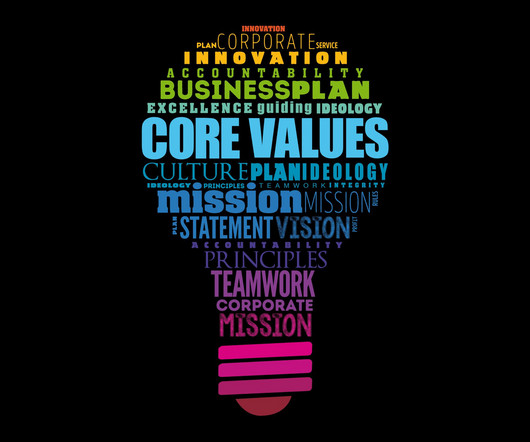
LSA Global
JUNE 20, 2024
At a company level, Google’s famous 20% rule allows employees to spend 20% of their work time on projects that interest them, but which may not necessarily fall within their regular job duties. At a team level, my old boss used to devote one-third of every leadership team meeting to learning and discussing something new.

The Management Centre
JULY 23, 2024
For example, providing skills-based programmes that explore management and leadership techniques would mean that your new or middle managers learn approaches to handle difficult situations and decisions. Another example could be short, practical and hands-on courses like time management or influencing skills.

LSA Global
JANUARY 12, 2018
While it is true that the knowledge, skills and abilities to manage others is not intuitive, those leadership attributes can be learned. The right management training can take an individual contributor who was responsible principally for their own productivity to a leader who knows how to manage the productivity of others.

LSA Global
SEPTEMBER 10, 2018
While hard skills such as data mining rank consistently high, the greatest skill gaps are in the areas of leadership, communication, collaboration and time management. What This Means.

LSA Global
DECEMBER 4, 2023
We know from our leadership simulation assessment data that resource constraints can be a significant obstacle to unlocking the power of strategic prioritization at work and achieving your strategic objectives. High performing teams review goals and accountabilities , set clear priorities, and feel confident about managing their workload.

The Management Centre
JANUARY 26, 2023
And whilst we spend almost all of our time delivering training, we wholeheartedly believe in learning lots of things in lots of different ways. There are thousands of management and leadership books, on all kinds of topics. Books are particularly useful if you want to take your time to digest ideas and to process information.

Harvard Business
OCTOBER 26, 2016
It’s a common complaint among top executives: “I’m spending all my time managing trivial and tactical problems, and I don’t have time to get to the big-picture stuff.” This suggests that the problem of too little strategic leadership may be as much a function of doing as of thinking.
Expert insights. Personalized for you.
We have resent the email to
Are you sure you want to cancel your subscriptions?


Let's personalize your content